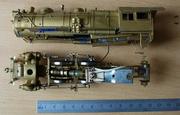
Difference: OlympiaE6s (35 vs. 36)
Revision 362020-05-04 - PeterSchmid
| Line: 1 to 1 | |||||||||||||||||||||||||||||||||||||||||||||||||||||||||
|---|---|---|---|---|---|---|---|---|---|---|---|---|---|---|---|---|---|---|---|---|---|---|---|---|---|---|---|---|---|---|---|---|---|---|---|---|---|---|---|---|---|---|---|---|---|---|---|---|---|---|---|---|---|---|---|---|---|
%DASHBOARD{ section="banner" | |||||||||||||||||||||||||||||||||||||||||||||||||||||||||
| Line: 6 to 6 | |||||||||||||||||||||||||||||||||||||||||||||||||||||||||
| title="Remotoring Olympia PRR E6s 4-4-2 Atlantic" titlestyle="color:#F00000;" }% | |||||||||||||||||||||||||||||||||||||||||||||||||||||||||
| Changed: | |||||||||||||||||||||||||||||||||||||||||||||||||||||||||
| < < | Original Olympia Model
| ||||||||||||||||||||||||||||||||||||||||||||||||||||||||
| > > | Original Olympia Model
| ||||||||||||||||||||||||||||||||||||||||||||||||||||||||
| GEM/Olympia | |||||||||||||||||||||||||||||||||||||||||||||||||||||||||
| Line: 22 to 22 | |||||||||||||||||||||||||||||||||||||||||||||||||||||||||
| Changed: | |||||||||||||||||||||||||||||||||||||||||||||||||||||||||
| < < | Prototype
| ||||||||||||||||||||||||||||||||||||||||||||||||||||||||
| > > | Prototype
| ||||||||||||||||||||||||||||||||||||||||||||||||||||||||
| Line: 35 to 35 | |||||||||||||||||||||||||||||||||||||||||||||||||||||||||
| Changed: | |||||||||||||||||||||||||||||||||||||||||||||||||||||||||
| < < | Contents
| ||||||||||||||||||||||||||||||||||||||||||||||||||||||||
| > > | Contents
| ||||||||||||||||||||||||||||||||||||||||||||||||||||||||
Coreless DC Motor
| |||||||||||||||||||||||||||||||||||||||||||||||||||||||||
| Line: 185 to 185 | |||||||||||||||||||||||||||||||||||||||||||||||||||||||||
Motor Configuration
| |||||||||||||||||||||||||||||||||||||||||||||||||||||||||
| Changed: | |||||||||||||||||||||||||||||||||||||||||||||||||||||||||
| < < |
| ||||||||||||||||||||||||||||||||||||||||||||||||||||||||
| > > |
| ||||||||||||||||||||||||||||||||||||||||||||||||||||||||
Headlight | |||||||||||||||||||||||||||||||||||||||||||||||||||||||||
View topic | History: r40 < r39 < r38 < r37 | More topic actions...
Ideas, requests, problems regarding TWiki? Send feedback

